Mineral cast machine bed | produce economically
- Details
- Hits: 17810
Machine beds are used as a stable base for the assembly and fixation of various machines such as metal cutting machines, machining centers or Robot deployed. The ones used for this Materials have individual properties that show their advantages depending on the application. The Mineral casting machine bed for example, is suitable for high-precision machines, for example. Below you will find new innovations for machine frames and beds.
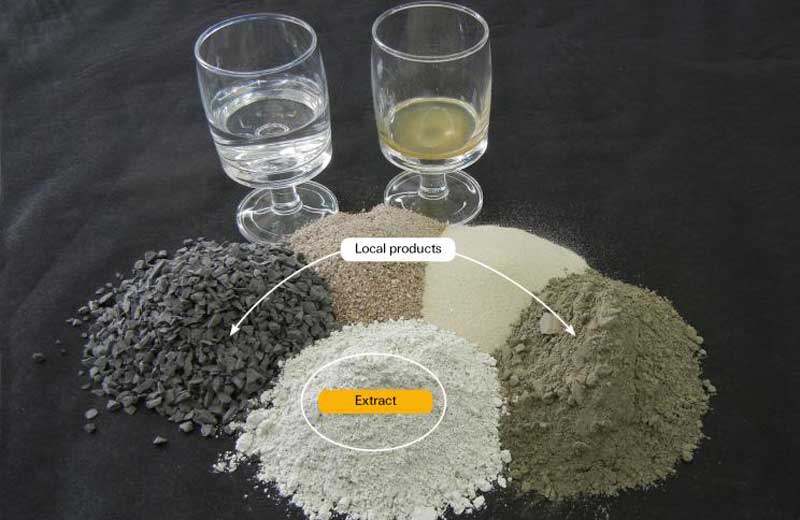
Contents
- Selection of materials is growing
- CO2 emissions: mineral casting versus gray cast iron
- Design of machine frames - webinar
- New developments for machine beds
- Extremely rigid mineral casting reduces deformation by 50%
- Machining in milling-turning centers on a solid machine frame
- High-performance concrete concentrate for the machine bed
- Mineral cast machine frame for stable six-axis robot
- New materials for molding mineral cast frames
- Mineral cast frame for ultra-precise laser cutting machines
- Low energy production of vibration dampening machine beds
Selection of materials is growing
The selection of Materials for machine beds has gotten a lot bigger lately. That doesn't make it any easier to find the right material. The damping properties of the materials are often the focus of selection. Next to graymolding and hard rock, high-performance concrete, mineral casting and welded constructions filled with concrete or mineral casting offer new possibilities for designing a machine bed. Below we will introduce you to some materials and applications that highlight the advantages of each.
CO2 emissions: mineral casting versus gray cast iron
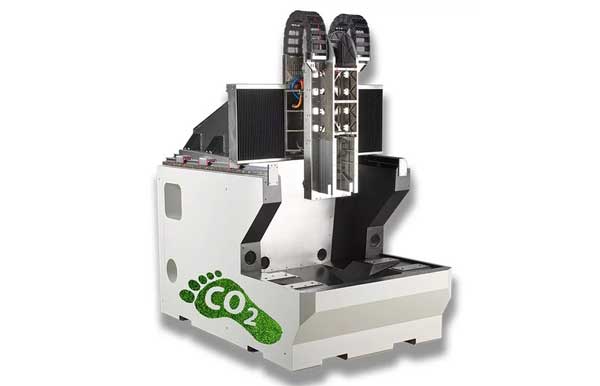 29.11.2023 | Rampf Machine Systems has the CO2 footprint have its epument mineral casting determined. The result is an around that 4,5 times lowerhe emission value than that of gray cast iron. For example, with a machine frame weighing 10 t, 12.940 kg of CO can be produced using Epument mineral casting2 save compared to gray cast iron. With around 360 kg of CO2 equivalents per ton, it has epoxy resinbonded frame and construction material has a clear advantage over other materials.
29.11.2023 | Rampf Machine Systems has the CO2 footprint have its epument mineral casting determined. The result is an around that 4,5 times lowerhe emission value than that of gray cast iron. For example, with a machine frame weighing 10 t, 12.940 kg of CO can be produced using Epument mineral casting2 save compared to gray cast iron. With around 360 kg of CO2 equivalents per ton, it has epoxy resinbonded frame and construction material has a clear advantage over other materials.
But why does mineral casting actually leave a better CO2 footprint? Mineral casting is poured cold into molds and hardens at room temperature without the addition of heat. In contrast, when casting gray cast iron, a lot of energy is required to heat the melt to 1150 °C. That's why the production of epument requires up to 75% less energy than with metal casting.
In addition, Rampf uses the high casting accuracy of mineral casting in the 0,1 mm range, coupled with the high precision In-house impression technology Transport trips to external processors and the use of processing machines are minimized. This reduces further CO2 emissions.
Epument mineral casting consists of over 90% naturally occurring minerals, rocks and an epoxy resin binder. This material can therefore be disposed of or recycled as normal construction waste.
Design of machine frames - webinar
02.02.2022 | The webinar on high-performance concrete in mechanical engineering provides practical tips for designing and creating solid machine beds made of Nanodur ready-to-manufacture drawings.
New developments for machine beds
Extremely rigid mineral casting reduces deformation by 50%
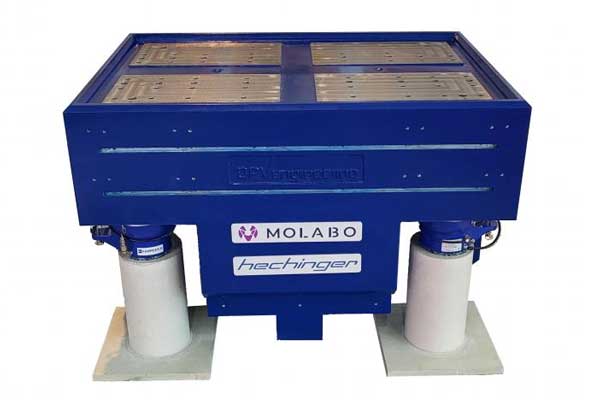 11.09.2023 | durcrete Together with Dyckerhoff, we have developed a special mixture for machine beds and test frames based on specially treated aggregates. The Nanodur concrete E80 has an elastic modulus of over 80.000 N/mm². This makes the material 50% more resistant to deformation and stiffer than the previously known classic mineral casting recipes epoxy resin- or cement base. This spectacular material also allows the natural frequencies to be increased dramatically.
11.09.2023 | durcrete Together with Dyckerhoff, we have developed a special mixture for machine beds and test frames based on specially treated aggregates. The Nanodur concrete E80 has an elastic modulus of over 80.000 N/mm². This makes the material 50% more resistant to deformation and stiffer than the previously known classic mineral casting recipes epoxy resin- or cement base. This spectacular material also allows the natural frequencies to be increased dramatically.
Because Durcrete is the special binder as a binder Nanodur from Dyckerhoff This high deformation resistance of the mineral product also exists at temperatures above 100 °C. In comparison to resin-bonded materials or even steel, the CO2-Footprint comparatively low.
The secret of this innovation is the replacement of natural stone with industrially treated aggregate Durigid, which is solidified through a sintering process. With the increased modulus of elasticity of the material, the easy castability into freely formed shapes, the solvent-free production and the self-compacting properties are retained.
Users of the material are mechanical engineers for whom dimensional stability and vibration damping of the machine bed is essential for the necessary accuracy, such as in milling and grinding machine frames. In addition, many manufacturers of test benches for electromobility are relying on the new material. In this way, they bring the natural frequencies of the test benches beyond the 25.000 rpm that occur in the drive of electric motors. There are also large-format components up to over 10 m long and up to 100 t weight possible as well as applications up to batch size 1.
Machining in milling-turning centers on a solid machine frame
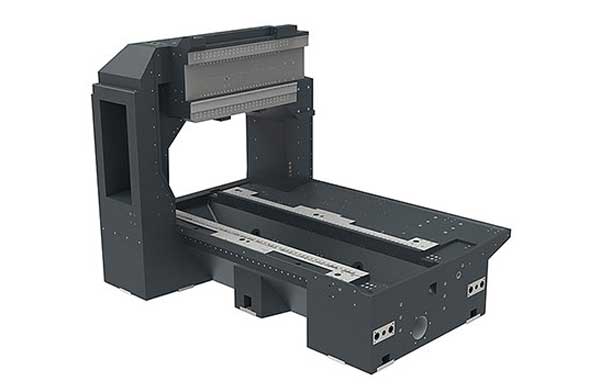 16.09.2019/733/XNUMX | Across all sectors, there are components that, from various points of view, are better not manufactured in a separate process on several specialized machines. Ensure the necessary stability in the MT XNUMX machining center from Stama Machine frames from "Epument" Mineral cast. These are machining-free with the highest precision from Rampf Machine Systems manufactured.
16.09.2019/733/XNUMX | Across all sectors, there are components that, from various points of view, are better not manufactured in a separate process on several specialized machines. Ensure the necessary stability in the MT XNUMX machining center from Stama Machine frames from "Epument" Mineral cast. These are machining-free with the highest precision from Rampf Machine Systems manufactured.
For precise, complex workpieces, the MT 733 milling-turning centers offer complete freedom in process design and optimization in order to completely machine all six sides from the blank to the finished part in one set-up. The small number of clamping positions required, the high level of functional integration for optimal process sequences and a highly precise automated workpiece transfer from OP10 to OP20 are trend-setting properties.
All four types of the milling-turning center series are designed in portal design. A machine frame consists of a bed and a portal for the types "one" and "one plus" or a bed and two portals for the types "MT 733 two" and "MT 733 two plus". Out Epument mineral casting manufactured, the machining process gains significantly in thermal, static and dynamic stability. The epoxy resin-bonded material is a very good basis for highly dynamic and high-precision milling / turning and drilling operations. With integrated automation, the MT 733 has the best prerequisites for a successful first-part-good-part strategy.
 Bent parts + laser parts online | calculate + order
Bent parts + laser parts online | calculate + order
With minimal deformation at maximum load, the vibration-damping frame material ensures precise securing of the geometric position of the machine elements as well as the absorption of forces and moments under static, dynamic, thermal and acoustic aspects. This is of particular relevance when it comes to components that are complex, difficult to machine and have long runtimes. The first finished workpiece must already be dimensionally stable for batch size 1 and in series production.
Cooling tubes poured into the machine frame
For precision machining with the highest demands on component accuracy, there is the option of active cooling linear guides, chip channel and structural parts in the machine base frame. The pipes for the cooling are cast directly into the mineral casting. “Cold-curing reaction resins enable a high degree of functional integration, so that components such as sensors, heating and cooling circuits are easy to integrate. In addition, the cold casting process uses up to 30 percent less primary energy in production compared to other materials. The casting process as such is CO02-free,” says Thomas Altmann, Managing Director of Rampf Machine Systems.
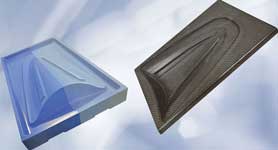 Liquid resin and epoxy resin for prototypes, models and molds
Liquid resin and epoxy resin for prototypes, models and molds
The precision surfaces of the machine frames of the modular MT 733 series are manufactured using the newly developed molding technology and are therefore non-cutting. The contour of a high-precision impression gauge is transferred to the mineral cast blank in temperature-controlled workshops using special covering systems (filled resins). While impressions in the hundredths of a millimeter range could previously only be reliably realized up to an impression length of 2,5 m, the numerous advantages of impression technology with the new development now also come into play for lengths of up to 4 m. Only very few milling and grinding operators can reliably achieve such high levels of accuracy with such component dimensions.
High-performance concrete concentrate for the machine bed
04.07.2019 | Dyckerhoff has with Nanodur Extract a new additive for that Mineral casting machine bed developed, which enables easy production of solid machine components, especially in countries outside Europe. The material is mixed at the manufacturer with local cements and aggregates, which makes the production more modern High-performance concretes becomes even easier and more economical. durcrete presents the new system and gives tips for designers.
Massive machine beds made of cement-bound concrete have now proven themselves on the market for over 10 years. They are used both in machine tools, but increasingly also in test benches and Automate solutions used. There are several plants in Germany that produce such machine beds. The market-leading binder for the high-performance concretes used in mechanical engineering applications is Nanodur Compound 5941, manufactured by Dyckerhoff GmbH in Wiesbaden. Due to its ease of use, the material has also been used in other European countries and in China for a long time. However, up to now, more than a ton of binder mixture had to be bought in Germany for export for 1000 liters of liquid concrete and transported to the production site.
 3D Printer Material | from plastic to metal
3D Printer Material | from plastic to metal
With Nanodur Extract, Dyckerhoff has now developed a concentrate that offers significant economic advantages. Only 230 kg of the concentrate for 1 m³ of concrete sufficient, otherwise locally available, high-quality cements and fine sands can be used. This not only saves expensive transport costs and storage capacities, but also the cost advantage for cements and sands from domestic production can be used by the producer. This advantage considerably facilitates the establishment of new production plants worldwide for machine components made of cement concrete and offers investors a simple entry into the production of massive machine beds made of cement-bound mineral casting.
Technical freedom helps to optimize recipes
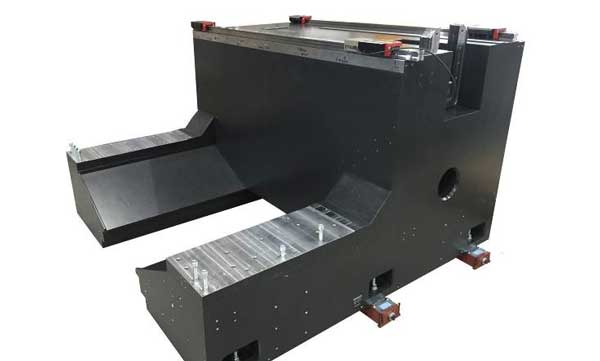 The technical values when using Nanodur Extract almost match those of the original mix. The concrete is still self-compacting and gives a perfect Surface. Both the standard concrete E45 and the special concrete E80 with an E-modulus of 80.000 N/mm² can be produced. Dyckerhoff provides know-how and laboratory capacities in order to adapt the properties of the respective formulation to the local raw materials. Nanodur Extract gives the producer an additional opportunity to recipes further zu optimize and adjust. He can also independently develop concrete recipes with lower requirements in order to satisfy the need for cheaper products.
The technical values when using Nanodur Extract almost match those of the original mix. The concrete is still self-compacting and gives a perfect Surface. Both the standard concrete E45 and the special concrete E80 with an E-modulus of 80.000 N/mm² can be produced. Dyckerhoff provides know-how and laboratory capacities in order to adapt the properties of the respective formulation to the local raw materials. Nanodur Extract gives the producer an additional opportunity to recipes further zu optimize and adjust. He can also independently develop concrete recipes with lower requirements in order to satisfy the need for cheaper products.
Durcrete as a consulting partner
When the new technology is introduced, the producers can also rely on the support of the durcrete GmbH fall back. The engineering office based in Limburg an der Lahn specializes in everything to do with cement-based mineral casting for machines and is available to the producers with help and advice.
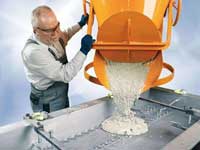 High-performance concrete for the large, heavy machine bed
High-performance concrete for the large, heavy machine bed
The assistance extends not only to recipes and properties, but also to factory planning and support in tendering and awarding mixers, molds and other aids. Durcrete has extensive know-how in the construction and calculation of solid machine components and also sells ready-painted machine beds precision machining.
Modern high-performance concrete in mechanical engineering
In the past, the machine bed was mainly made of steel, cast steel or cast iron. As a result of technical and economic requirements for machine tools, frame components made of materials such as Mineral casting or epoxy resin bonded polymer concrete established. Steel and cast iron are the most resilient, but are very energy-intensive and expensive to produce. massive Materials such as polymer concrete and natural stone, on the other hand, are common due to their lower price and technical advantages. More modern Ultra high performance concrete (Ultra High Performance Concrete - UHPC for short) now has a permanent place in mechanical engineering.
In addition to the low costs, UHPC offers advantages in vibration damping and the thermal behavior of the tool machine. It also replaces conventional materials such as gray cast iron or welded steel constructions. With the high-tech material, modern mechanical engineering could be given completely new impulses. Several specialized precast factories around the world have been successfully producing machine parts made of Nanodur concrete for several years.
Mineral cast machine frame for stable six-axis robots
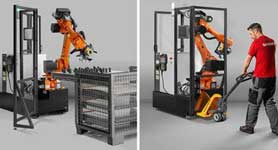 21.02.2019/XNUMX/XNUMX | Sherpa Robotics relies on its camera-controlled Six-axis robot for the automated loading of components on CNC machines machine frame made from epument mineral casting Rampf Machine Systems. The epoxy resin bonded material ensures the necessary stability of the “Sherpaloader” with a very good ecological balance. Not least because from now on the mineral cast will be produced without the addition of hard coal fly ash.
21.02.2019/XNUMX/XNUMX | Sherpa Robotics relies on its camera-controlled Six-axis robot for the automated loading of components on CNC machines machine frame made from epument mineral casting Rampf Machine Systems. The epoxy resin bonded material ensures the necessary stability of the “Sherpaloader” with a very good ecological balance. Not least because from now on the mineral cast will be produced without the addition of hard coal fly ash.
New materials for molding mineral cast frames

11.12.2018 | With new materials and optimized manufacturing and processing processes Rampf Machine Systems set new standards in the molding of mineral cast frames. With a molding length of 4 m, an evenness and a straightness of 0,02 mm are achieved. “The focus of the new molding technology is the manufacturing process of the gauge and the reduction of its own weight with the same or higher rigidity. In addition, we use new materials whose suitability has been checked using extensive FEM calculations,” reports Marc Dizdarevic, Director of Technics, Development at Rampf Machine Systems.
The basic accuracy of the impression gauge is included 0,005 mm over the entire length and is reliably implemented due to the optimized manufacturing process. Marc Dizdarevic: With this groundbreaking further development, the numerous advantages of molding technology can now also be used for larger areas. Previously, impressions in the hundredths of a millimeter range could only be reliably realized up to an impression length of 2,5 meters. Molding enables the production of precise surfaces on machine frames without machining in temperature-controlled workshops directly by the manufacturer. The contour of high-precision gauges is transferred to the mineral cast blank using special covering systems (filled resins). The process is very economical, especially for medium to large quantities, since there is no need for cost-intensive processing machines.
Mineral cast frame for ultra-precise laser cutting machines
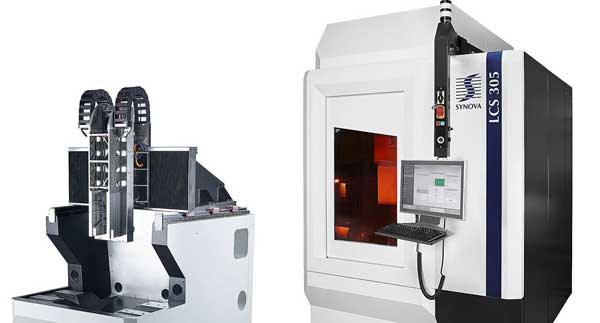 05.09.2018 | The Swiss company's laser cutting machines are ultra-fast and ultra-precise Synova, The "Laserjet" Microjet "cuts a multitude of materials such as metals, ceramics, ultra-hard materials and hard metal substrates as well as non-conductive materials such as SCD. The latest process offers maximum process accuracy and speed Machine LCS 305. It stands on a low-vibration machine bed made of "Epument" mineral casting Rampf Machine Systems.
05.09.2018 | The Swiss company's laser cutting machines are ultra-fast and ultra-precise Synova, The "Laserjet" Microjet "cuts a multitude of materials such as metals, ceramics, ultra-hard materials and hard metal substrates as well as non-conductive materials such as SCD. The latest process offers maximum process accuracy and speed Machine LCS 305. It stands on a low-vibration machine bed made of "Epument" mineral casting Rampf Machine Systems.
In order to be able to meet the very high process accuracies and speeds, Synova is using its new 5-axis machine from the LCS series laser cutting machines Modules from Rampf Machine Systems. The core of these basic modules are machine beds made of Epument mineral casting and slide units in "Epulight" lightweight construction technology.
A minimal deformation under maximum load, the vibration-damping frame material Epument ensures that the geometric position of the individual machine elements is precisely secured during laser cutting and that forces and moments are absorbed under static, dynamic, thermal and acoustic aspects. The use of lightweight materials in the carriage units of the laser cutting system fully meets the requirements with regard to the required dynamic values when cutting.
8 to 10 times higher material damping
Epument mineral casting is composed of selected minerals and rocks as well as high-quality epoxy resin-based binders. From a material-technical point of view, the main advantage over gray cast iron and welded constructions is that they are significantly better Damping. This ensures higher dynamic stability of the frame structure in ultra-fast and high-precision production machines. Comparative measurements of the logarithmic decrement as a damping parameter show that mineral casting has eight to ten times higher material damping during laser cutting than metallic materials.
In addition, the high isotropy and homogeneity deformations of the machine frame under load and the material has a high media resistance. Unconventional frame and variant structures are possible thanks to flexible shaping, non-cutting molding and innovative adhesive technology. And through surface and design functionality, the costs for machine hoods and cladding can be reduced. “Due to these advantageous material properties, our frame material is used in numerous technological areas. In addition to classic machine tool construction and the laser industry, this also includes applications in the semiconductor, medical and packaging industries," says Thomas Altman, Managing Director of Rampf Machine Systems, the market-leading development partner and system supplier for complete frame solutions and machine systems based in Wangen near Göppingen.
Environmentally friendly production, disposal and recycling
Epument also takes into account the increasing demands for more environmentally friendly production. Because this scores with its resource-saving production as well as environmentally friendly disposal and recycling: The material is cast cold in molds made of wood, steel or plastic. As a result, the production consumes up to compared to other materials 30% less primary energy. The high casting accuracy, paired with the high-precision in-house molding technology of the manufacturer, saves the otherwise necessary transport trips to external processors and reduces or avoids the use of processing machines.
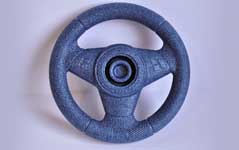 Foam laser technology from Arpro to a depth of 1,5 mm
Foam laser technology from Arpro to a depth of 1,5 mm
In addition, there is no danger to the Epument Health from: The material can be used in food-related environments, e.g. in the food and packaging industry, safely and effectively as an antibacterial agent. It is approved according to the Food and Consumer Goods Act, the Consumer Goods Ordinance (89/109/EWG and 90/128/EWG) and the Code of Federal Regulations, Food and Drugs (FDA).
Low energy production of vibration dampening machine beds
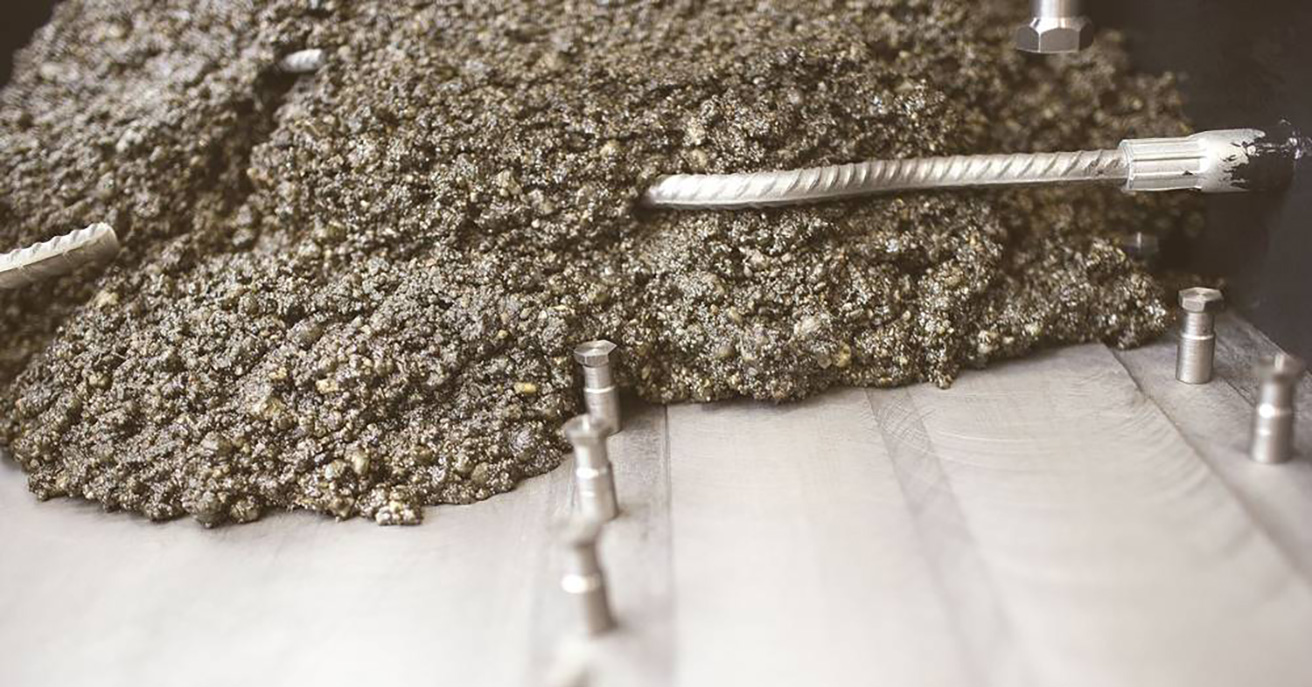
05.02.2018 | The epoxy resin-bound mineral cast from Rampf Epument has long been established in highly dynamic mechanical engineering in machine beds and frame components due to its very good damping properties and very high thermal stability. In view of the global trend towards more sustainable and environmentally friendly industrial production, another advantage of the material is becoming even more important: the ecological balance.
Organice Factors are playing an increasingly important role in industrial production – worldwide: several thousand companies were closed in China last autumn because they did not comply with environmental protection regulations. In the USA, a broad alliance of states and large cities has formed against President Donald Trump's decision to withdraw from the Paris climate protection agreement. "Environmental pollution, the overexploitation of finite resources and the generation of waste and wastewater are having an increasing impact on production processes," emphasizes Dirk Hausmann, Managing Director of Rampf Machine Systems, the market-leading development partner and system supplier for complete frame solutions and machine systems based in Wangen (near Göppingen).
Epument takes this development into account. The one developed and produced by Rampf epoxy resin bonded Mineral casting is used in vibration-damping machine beds and frame components in highly dynamic mechanical engineering and scores with its resource-saving production and environmentally friendly disposal and recycling:
From nature, for nature
 The mineral cast is cast cold in molds made of wood, steel or Plastic shed. As a result, up to 30% less primary energy is used in production compared to other materials. The high casting accuracy, paired with the high-precision in-house molding technology of the manufacturer, saves the otherwise necessary transport trips to external processors and reduces or avoids the use of processing machines.
The mineral cast is cast cold in molds made of wood, steel or Plastic shed. As a result, up to 30% less primary energy is used in production compared to other materials. The high casting accuracy, paired with the high-precision in-house molding technology of the manufacturer, saves the otherwise necessary transport trips to external processors and reduces or avoids the use of processing machines.
Epument mineral cast is too over 90% made from naturally occurring minerals and rocks and a binder based on epoxy resin. Due to this high mineral content and the environmentally harmless resin compound, the material can be disposed of like normal construction waste. The crushing of cast mineral parts in large shredder plants to high-grade split and the separation of metal built-in parts has been tried and tested. fine split made of cast mineral can be installed as building rubble recycling material in road and path construction, in industrial construction, in surface sealing of landfills or in green areas.
In addition, Epument does not pose a health risk. The material can be used in food-related environments such as in the food and packaging industry, can be used safely and effectively as an antibacterial agent. It is approved according to the Food and Consumer Goods Act, the Consumer Goods Ordinance (89/109/EWG and 90/128/EWG) and the Code of Federal Regulations, Food and Drugs (FDA). The mineral cast is made from selected minerals and rocks as well as high-quality binders epoxy resin composed. From a material-technical point of view, the main advantage over gray cast iron and welded constructions is the significantly better damping, which ensures higher dynamic stability of the frame structure in ultra-fast and high-precision production machines.
Laboratory test results certify cushioning properties
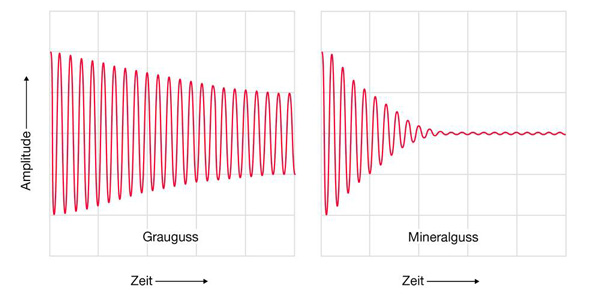 Comparative measurements of the logarithmic decrement as a damping parameter show that mineral casting has an 8 to 10 times higher material damping has than metallic materials. In Japan were from Ono Sokki, a leading manufacturer of measuring instruments, conducted laboratory tests in which the damping properties of Epument Mineralguss 145B were compared with those of Cast Iron FC 300. FC 300 is a material comparable to HT 300 in China, No. 45 in the USA and GG 30 in Germany.
Comparative measurements of the logarithmic decrement as a damping parameter show that mineral casting has an 8 to 10 times higher material damping has than metallic materials. In Japan were from Ono Sokki, a leading manufacturer of measuring instruments, conducted laboratory tests in which the damping properties of Epument Mineralguss 145B were compared with those of Cast Iron FC 300. FC 300 is a material comparable to HT 300 in China, No. 45 in the USA and GG 30 in Germany.
Epument walked out of this comparison as Clear winner out. The comparison of the decay curves for mineral cast and gray cast iron shows the outstanding damping properties of the epoxy resin-bonded material. As a result, for example, step and feed speeds can be increased, the positioning accuracy increases, the tool life is extended and the achievable surface qualities are improved.
 3D printing process | manufacturing of the future
3D printing process | manufacturing of the future
In addition, the low thermal conductivity ensures a high thermal stability. The high degree of isotropy and homogeneity prevent deformation of the machine frame under load and the material offers high media resistance. Unconventional frame and variant structures are achieved through flexible shaping, non-cutting molding and innovative adhesive technology. In addition, thanks to the surface and design functionality, it was possible to reduce the costs of the machine hood and implementation. Due to these positive material properties, the alternative frame material is used in numerous technological areas. In addition to classic machine tool construction, this includes applications in the semiconductor, laser, Medicineand packaging industry.
Production in Germany and China
"The material properties and the ecological balance of Epument are unbeatable," is the conclusion of FabianWerner, Managing Director of Rampf China, the Chinese Rampf subsidiary. “We create a significant competitive advantage for our customers worldwide and make a contribution to protecting our environment. Epument Mineralguss is produced in Germany and in China (for the Asian and NAFTA markets). The production standards are identical at all locations.
Which materials are suitable for machine beds?
There are several materials suitable for use in machine beds, including:
- cast materials: Gray cast iron (GG) and nodular cast iron (GGG) are the most common materials for machine beds. They offer high damping to reduce vibration and noise and are characterized by good dimensional stability. However, they are heavy and not suitable for high-speed machines.
- Mineral casting is a particularly important material for machine beds and is widely used in precision machinery such as CNC machine tools, measuring machines and other high-precision equipment. Minerals such as quartz sand are mixed with a binder such as epoxy resin. The very high damping makes mineral cast frames very stable.
- Steel and welded constructions: These materials are used in machines where high speeds and/or heavy loads are involved. They are very stable and can absorb high forces, but have less damping than cast materials.
- Concrete and UHPC (Ultra High Performance Concrete): More recently, concrete or UHPC is also used for machine beds. They offer high damping and are also inexpensive. However, they are heavy and not suitable for dynamic applications.
- Aluminium used for light and fast-moving machines. It is light and has good thermal conductivity, but lower damping and stability than other materials.
What are the advantages of mineral casting?
Mineral casting is a particularly important material for machine beds and is often used in precision machines such as CNC machine tools, measuring machines and other high-precision devices. Mineral cast consists mainly of mineral fillers such as quartz sand and quartz gravel mixed with a resin binder (usually epoxy). The components are thoroughly mixed, poured into a mold and then cured. These are the advantages of mineral casting
- High attenuation: up to 5 to 10 times higher than that of traditional cast iron and steel. This makes it a good choice for machines that require high precision, as it effectively dampens vibrations that could affect precision.
- thermal stability: Compared to metals, mineral cast has a lower thermal conductivity and a lower coefficient of thermal expansion, resulting in improved thermal stability.
- Diverse design: Because cast mineral is cast, complex shapes and internal structures can be produced with relative ease.
- Environmentally friendly: Compared to traditional cast or steel, mineral cast uses less energy and generates less CO2 emissions during production.
What is epument mineral casting?
Epument mineral cast consists of selected rocks and minerals as well as high-quality binders based on epoxy resin. The high-tech material is very well suited for the main functions of machine beds, such as precisely securing the geometric position of the individual machine elements and absorbing forces and moments under static, dynamic, thermal and acoustic aspects.
You might also be interested in...
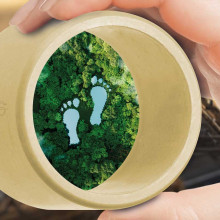
Reduce carbon footprint | That's how it's done!
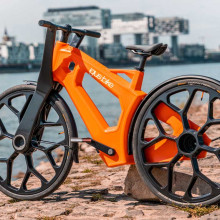
Plastic recycling from and for industry and other uses
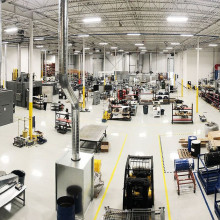
Rampf Group with a new plant in Canada and 15 years in Japan
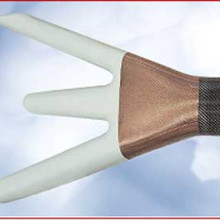
Structural resin and composite for the high demands of aviation

Electro casting resins reliably cool electrical and electronic components

Microwave technology for curing and processing times that are up to 4 times faster
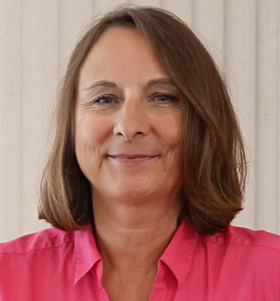
Angela Struck is editor-in-chief of the development scout and freelance journalist as well as managing director of Presse Service Büro GbR in Ried.

